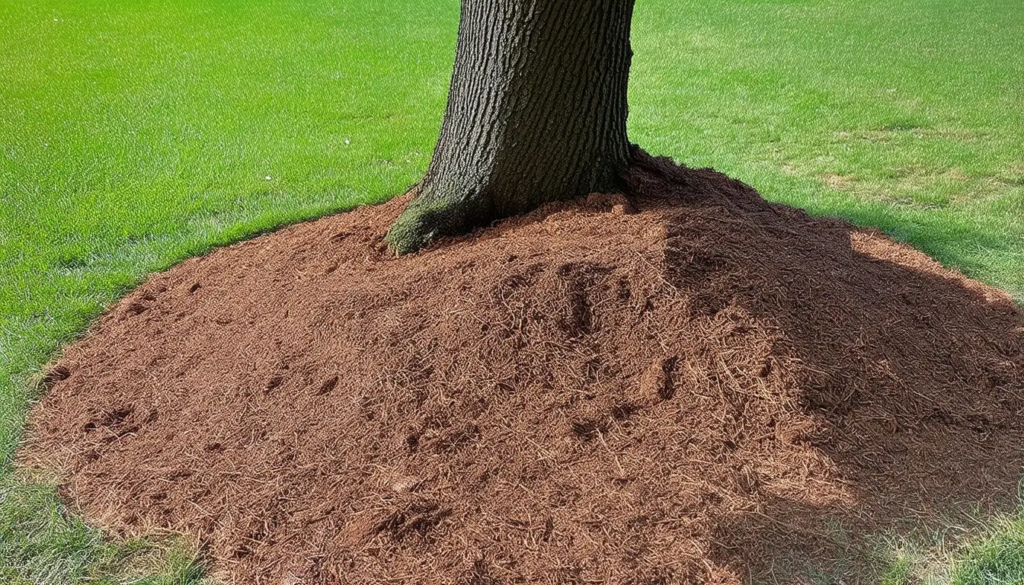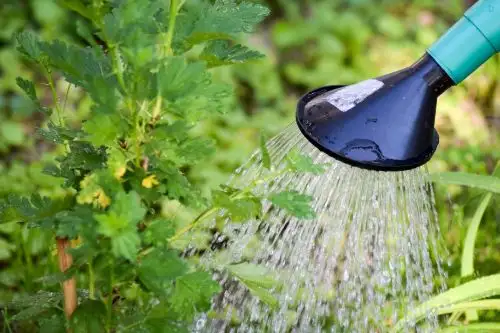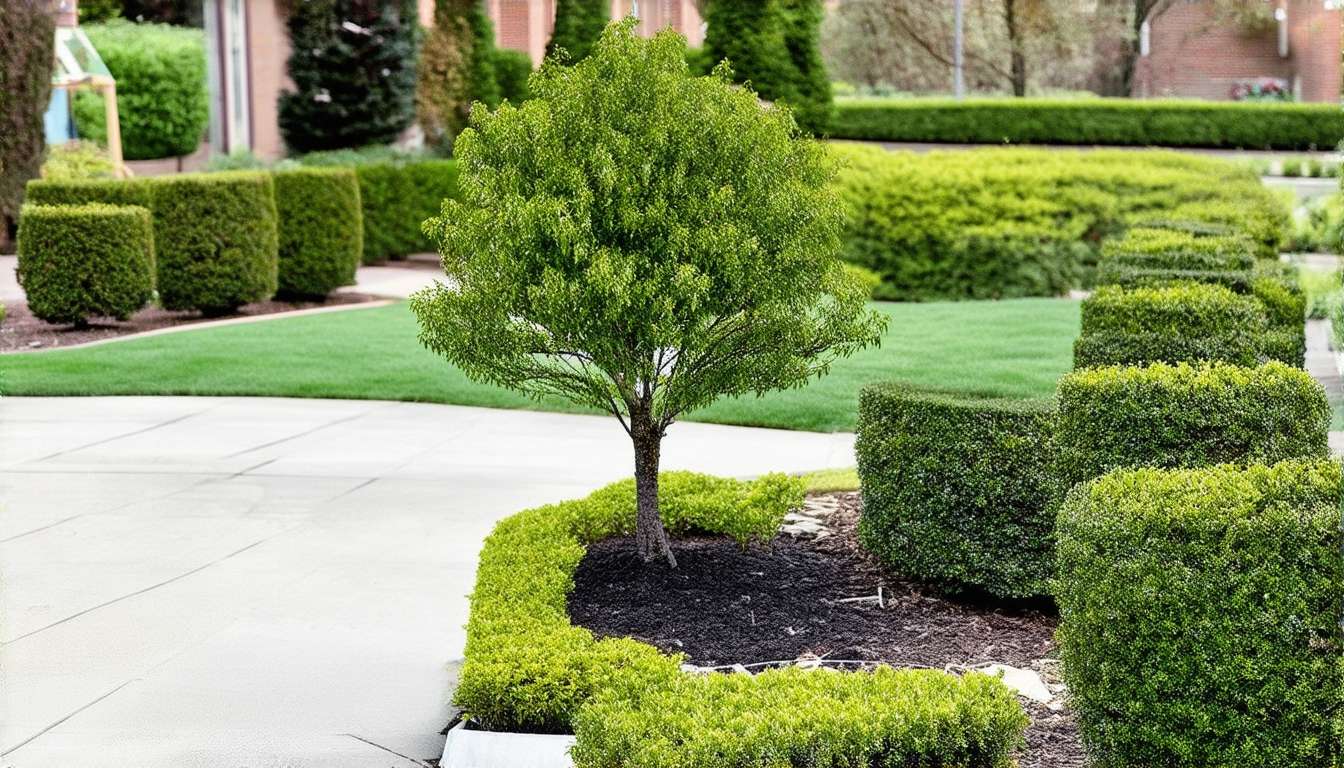Planting a tree might seem as simple as digging a hole and placing the tree inside, but ensuring its long-term survival requires a bit more know-how. By following these seven essential steps, you can guarantee your tree will thrive.1
Over the years, I’ve honed these steps through hands-on experience, learning from both successes and failures. Gardening is a journey of continuous learning, and each tree planted is a step towards a greener planet.

Trees are vital to our ecosystem, often referred to as the earth’s lungs. They play a crucial role in sustaining life by providing oxygen, improving air quality, and supporting wildlife. This understanding fuels my passion for trees and underscores the importance of planting more of them.
My dedication to tree planting has led me to collaborate with various organizations to promote this cause. Recently, I partnered with Lands’ End to encourage everyone to #PlantATree in celebration of Earth Day, highlighting the significance of each tree we plant.
Whether you’re a novice or a seasoned tree planter, there’s always something new to learn. Planting a tree correctly is especially important in today’s changing climate to ensure your efforts are fruitful.
For a detailed guide, check out our video that demonstrates the proper tree planting techniques and outlines the seven essential steps to ensure success every time.
Choosing the Optimal Time to Plant a Tree
Timing is crucial when it comes to planting trees and shrubs. While you can technically plant them any time of the year, certain seasons offer better conditions for growth.
Ideally, you want to plant your tree when it has the most time to establish roots before the stress of summer heat. This makes fall the perfect season for planting, as it allows the tree to settle in before winter. Early spring is also a favorable time, giving the tree a head start before the growing season.
How to Plant a Tree the Right Way – Follow These Seven Important Steps

Step 1: Prepare the Planting Hole
Start by digging a hole that is three times wider than the tree’s root ball but no deeper than the tree was previously planted. This ensures the roots have ample space to spread out.
A helpful tip is to locate the trunk flare, where the trunk widens at the base. Make sure this flare remains above the soil line when planting. Sometimes, trees in containers are planted too deeply, so you may need to remove some soil to find the true base of the trunk. Always check for this to avoid planting too deep.

Step 2: Plant Slightly High
When placing the tree in the hole, position it so that up to 25% of the root ball is above the surrounding soil level. This helps prevent the tree from settling too low, which can lead to root rot or disease. Taper the soil up to cover the roots and add a generous layer of mulch on top. This method ensures better drainage and prevents the tree from sitting in excess water.
Step 3: Examine and Loosen the Roots
After removing the tree from its container, take a close look at the roots. If they are tightly wound in a circular pattern or have begun to conform to the shape of the container, it’s crucial to disrupt this growth pattern.
Failing to address root-bound plants can severely hinder their growth and health. A plant with constricted roots will struggle to establish itself and may never reach its full potential. Therefore, it’s essential to break up the root pattern before planting.
Don’t worry about damaging the roots or losing some soil in the process. It’s better to give the roots a fresh start than to let them remain in a restrictive pattern. While you should avoid being overly rough, do what is necessary to encourage new, healthy root growth.
For minor cases, gently scratch the sides and bottom of the root ball with your fingers. For more severe cases, use a pruning saw to make vertical cuts along the root mass, trim off the bottom inch, or pull the roots apart to promote non-circular growth.
Step 4: Avoid Soil Amendments
Modern research suggests that you should avoid adding extra organic material to the planting hole, unless you plan to amend the entire area where the roots will eventually spread. When roots grow in amended soil, they often struggle to penetrate the tougher native soil, leading to a smaller root system, stunted growth, and a less resilient plant.
Instead, focus on breaking up any clumps in the existing soil, removing rocks, and backfilling with the native soil. Studies have shown that plant roots establish and expand more effectively when grown in unamended native soil, leading to healthier and more robust growth.
Step 5: Remove Air Pockets
Step 5: Remove Air Pockets
To ensure the roots have good contact with the soil and to eliminate air pockets, you can lightly tamp or hand-pack the soil around the roots. However, a more effective method is to use a strong spray of water after backfilling the hole halfway. This not only provides essential moisture but also helps to remove any air pockets that could harm the roots. Be careful not to compact the soil too much. Once the hole is fully backfilled, water the area gently but thoroughly to settle the soil and further eliminate any remaining air pockets.

Step 6: Apply Mulch
Begin by leaving a small gap of about two inches around the trunk to prevent rot. Spread a two-inch layer of organic mulch, such as shredded leaves, bark, or wood chips, around the base of the tree, extending out to at least the drip line. The further you extend the mulch, the better. Mulch helps retain moisture, regulate soil temperature, and keep the roots cool—essential for newly planted trees.

Step 7: Watering Until Establishment
Ensuring your newly planted tree receives adequate water is crucial for its establishment, which can take anywhere from weeks to over a year. Fortunately, you can automate this process to make it easier.
The key to effective watering is slow and deep irrigation, which allows the soil around the roots to become thoroughly saturated, giving the roots ample time to absorb moisture without causing runoff. This is best achieved using soaker hoses or drip irrigation systems, as manual watering with a hose or sprinkler is less effective.
For newly planted trees, water them daily for the first week. In the following two weeks, reduce watering to every other day, and then gradually decrease the frequency.
It’s important to strike a balance between sufficient and excessive watering, especially for large trees with root balls wrapped in burlap, as they have lost their feeder roots during transplantation. Providing the right amount of water is essential for their survival and growth.
- University of Florida – Steps to planting a tree
https://hort.ifas.ufl.edu ↩︎




Expert guidance on selecting trees that thrive in specific environments, I am grateful for it. What are the key considerations homeowners should keep in mind when choosing trees for their property?